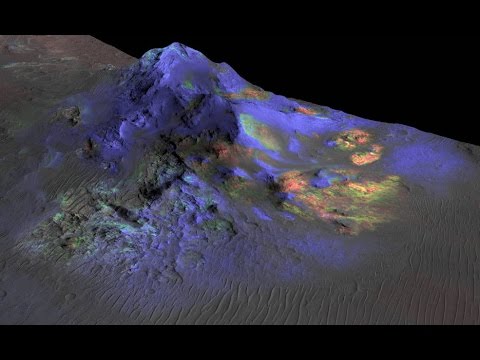AI SpaceFactory – MARSHA – Our Vertical Martian Future – Part One
MARSHA is our proposal for a Martian surface habitat. It’s born of a careful response to the Martian environment and a synergy between structural, architectural and construction principles with human experience at the center. The first task for any Martian home is to hold an Earth-like atmosphere. A simple trade study of spatial and material efficiency shows that a vertically oriented cylinder is the best formal basis for a surface habitat. Apart from being highly effective pressure vessels, they provide the greatest ratios of usable floor area to surface area. and usable floor area to volume and diameter. Reducing surface area means using less material under less stress, Reducing volume means reducing energy loads on mechanical systems. And reducing diameter directly reduces structural stresses, especially at the base, where uplift forces will require anchorage into uncertain ground. Unlike domes, they do not produce unusable overhead volume or unusable perimeter floor area. Therefore, the most direct way to reduce structural loading and maximize usable space is to reduce the diameter and add space vertically. This configuration also lends itself exceptionally well to joining and separating mission activities in a meaningful way by level; avoiding the need to divide one large area into lots of small, confined spaces. Finally, vertical cylinders are also inherently the most printable pressure vessel and their resulting smaller footprint aids in construction by reducing the printer’s required range of mobility. Apart from pressurization, Mars’ drastic thermal swings means that any structure not allowed to expand and contract will fail. Our solution to this is two-fold: At the ground, we render the shell and its base as a single structure – a flanged shell – that moves on sliding bearings at its contact with the ground while clamps and soil anchors secure the flange against uplift. And inside we separated the pressure vessel from the habitable area entirely; resulting in a double shell system with many architectural uses. Since it does not hold an atmosphere, the inner shell is free to be light, airy and highly mass-optimized. By way of the large water-filled skylight and intermittent windows, the space between these two shells acts as a light-well connecting every level with diffuse natural light and circadian lighting. This unique space allows for a stair to arc gently from floor to floor using support from the shell itself. Being printed, it offers infinite possibilities for integrated ducting for routing air flow to where it’s needed – moving central clean air from top to bottom, with local climate control per level. It also provides constant access for maintenance and repair of the wall. Finally, it’s an interesting space that adds dimension to daily life. Indeed, missions present stresses and challenges that can’t be solved at the operational level and must be addressed spatially. The layout must reflect the strict flow of tasks typical of Space missions. But since sustained social and mental health are also mission critical, habitats should offer elements of surprise and literal room for the crew to slip outside of an overly prescriptive existence. Marsha’s layout is zoned with both of these principles in mind. At ground level, the “garage” is the interface with external systems and explorative activities with a supporting wet lab. Just above, is 34 square meters of joint dry lab and kitchen acting as the main hub. On the third level are the individual cabins, sanitation pod, and hydroponic garden. And at the top, the bright “skyroom” is dedicated to informal recreational uses and exercise. Each level has at least 1 window which, together, cover the full 360° panorama. In this alien environment, construction sequence and materials must be rethought entirely. We’re formulating a material specifically for 3D-printing on Mars: Basalt fiber-reinforced polylactic acid (PLA). PLA is a strong thermoplastic that is not only mission-recyclable like other plastics but mission-renewable using bioreactors fueled by mission waste. It also has among the lowest coefficients of thermal expansion among plastics – crucial to achieving composite action with chopped basalt fiber, which is added for tensile strength Basalt fiber, produced from local rock, is also among the most effective insulators known. Marsha is printed in successive layers tied together with continuous pours through integrated voids granting true structural orthotropy.













